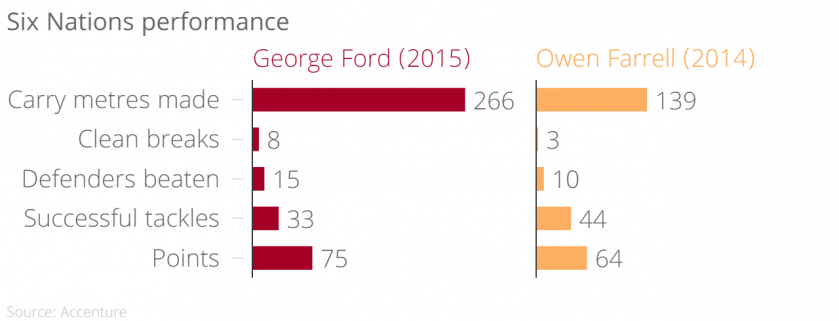Six Nations 2016: Is George Ford and Owen Farrell pairing best bet for England v Italy?

Instead of pitting George Ford and Owen Farrell against each other for a starting spot as England’s fly-half, Eddie Jones deployed the pair in a 10-12 axis against Scotland in their successful Six Nations opener.
The head coach played Ford and Farrell at fly-half and inside-centre respectively and the presence of two decision makers within his backline bore fruit after a well-designed move involving the pair set up winger Jack Nowell for a crucial try.
This was the first time the combination has been used against a tier one nation, having previously been deployed in easy victories against Uruguay and Samoa.
If England want to build upon a strong performance from their pack at Murrayfield with increased incisiveness in attack when they travel to Rome on Saturday, Ford is likely to retain his place.
Read more: England hoping to hammer Italy in Six Nations – but Rome wasn’t built in a day
The last two Six Nations provide a useful comparison of the pair's merits, since Ford started at fly-half in every game of the 2015 event, just as Farrell did in 2014.
Data from Accenture, the official technology partner of the RBS Six Nations, reveals that Ford vastly outperformed Farrell on every attacking metric with ball in hand such as metres made (266 to 139), clean breaks (eight to three) and defenders beaten (15 to 10).

Farrell, however, offered a more solid defensive shield in midfield, making 44 successful tackles during his starting run to Ford’s 33.
This was reflected in the pair’s performance against Scotland. Ford was more likely to carry the ball to either instigate attacks by beating the gain line or to take contact in order to set up Farrell for a kick. The Bath man carried for 17 metres compared to just four for Farrell.
In contrast to the dual playmaker approach, Stuart Lancaster instead opted for a more traditional runner at inside centre in Luther Burrell who carried for 149 metres, or 29.8 metres per game.

Farrell made 20 passes against Scotland and kicked eight times our of hand, while last year Burrell averaged just four passes per game and kicked in play just once in the entire tournament.
Yet if the intention of having two decision makers in midfield was to help England get quick ball to Joseph, Nowell, Anthony Watson and Mike Brown, the early signs were not encouraging against Scotland.
On average, the four players were set loose for an average of eight carries and 0.75 clean breaks during the game, whereas at last year's Six Nations where Farrell was axed, England's wingers, full-back and outside centre averaged 9.3 carries per game and 1.9 clean breaks per game.